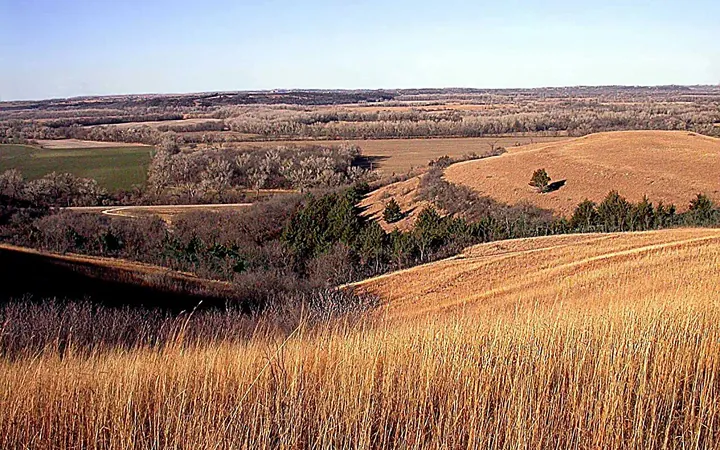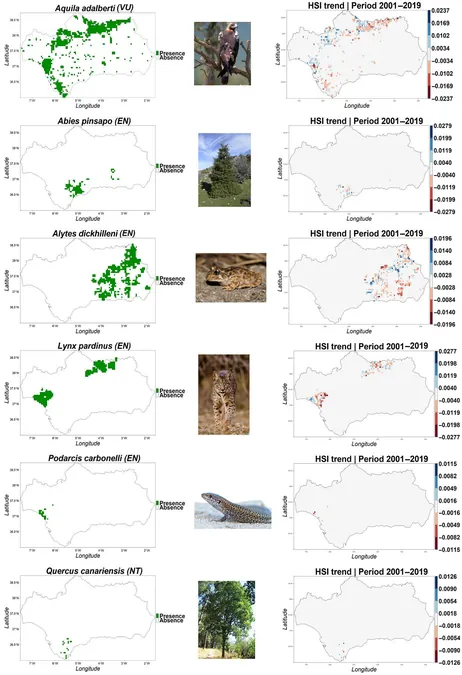
Unraveling America's Ancient Climate Mysteries: New Findings on Drought Patterns
2025-05-08
Author: Nur
A Deep Dive into Ancient Droughts
A groundbreaking study from the University of Helsinki sheds light on the ancient climate shifts that led to catastrophic droughts across North America thousands of years ago. The research focuses on the Holocene epoch, a time characterized by rising temperatures following the last ice age. Understanding these ancient patterns of drought, which had significant effects on ecosystems, is crucial for bolstering our resilience against today's climate challenges.
The Mysterious Causes of Drought
Despite their severe impacts, the roots of these lengthy droughts remained enigmatic until now. Researchers from the University of Helsinki, collaborating with experts from institutions in the U.S., Germany, and Sweden, meticulously analyzed the evolutionary trends and causes behind these droughts in a broad stretch from the Rocky Mountains to the Atlantic Ocean.
"For the past 11,000 years, North American water supplies have fluctuated dramatically, with droughts that rival the notorious Dust Bowl lasting centuries or even millennia," explains Bryan Shuman, a study co-author from the University of Wyoming. This insight underscores the importance of comprehending historical drought patterns to prepare for future climate variations.
Uncovering the Data
The team harnessed an extensive dataset of fossil pollen grains collected over several decades across North America. By employing advanced machine learning algorithms, they reconstructed historical moisture levels throughout the Holocene, providing clarity on how climate conditions have changed over time.
Regional Insights on Drought History
Led by J. Sakari Salonen, an Academy of Finland research fellow, the study found that moisture levels were persistently lower than today’s standards for thousands of years. Interestingly, different regions experienced diverse drought histories, highlighting the complexity of these climatic shifts. Salonen notes, "Drought conditions initiated in the northeastern U.S. and parts of Canada about 11,000 years ago, long before they spread to the mid-continental regions, which faced severe drought around 7,000 years ago."
Implications for Modern Water Availability
In a surprising revelation, the study demonstrates that areas currently perceived as water-abundant, such as the eastern U.S., experienced significant moisture shortages in the past. Jack Williams from the University of Wisconsin–Madison emphasizes the urgency of recognizing these historical patterns, warning that prolonged droughts could drastically alter fire regimes and vegetation.
Simulating the Past to Predict the Future
To strengthen their findings, researchers contrasted their climate models with numerical simulations conducted on supercomputers. Frederik Schenk, an atmospheric physicist at Stockholm University, highlights how cutting-edge models, which operate with far greater resolution, were essential in identifying the triggers behind these ancient droughts.
The study identifies two primary causes: a persistent high-pressure system stemming from the ice sheet that altered moisture transport patterns and a gradual warming trend that led to widespread drought as the ice melted.
Lessons for a Warming World
What’s particularly alarming is the parallel between past drought patterns and projections for North America's future climate. Researchers predict that much of the continent could face increased aridity in the coming decades due to climate change, despite a rise in precipitation. This discrepancy arises from heightened evaporation rates, which threaten to dry out land even amidst increasing rainfall.
Salonen warns, "If climate projections prove accurate, we might be on the fast track to repeating the natural phenomena of drought that occurred 10,000 years ago, but this time triggered by human-induced factors." The urgent need to understand these ancient climate changes underscores the significance of this research as we confront unprecedented climatic challenges.





 Brasil (PT)
Brasil (PT)
 Canada (EN)
Canada (EN)
 Chile (ES)
Chile (ES)
 Česko (CS)
Česko (CS)
 대한민국 (KO)
대한민국 (KO)
 España (ES)
España (ES)
 France (FR)
France (FR)
 Hong Kong (EN)
Hong Kong (EN)
 Italia (IT)
Italia (IT)
 日本 (JA)
日本 (JA)
 Magyarország (HU)
Magyarország (HU)
 Norge (NO)
Norge (NO)
 Polska (PL)
Polska (PL)
 Schweiz (DE)
Schweiz (DE)
 Singapore (EN)
Singapore (EN)
 Sverige (SV)
Sverige (SV)
 Suomi (FI)
Suomi (FI)
 Türkiye (TR)
Türkiye (TR)
 الإمارات العربية المتحدة (AR)
الإمارات العربية المتحدة (AR)